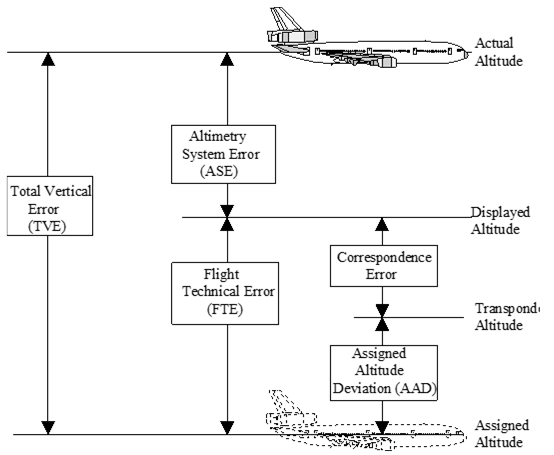About Height Monitoring
All operators that operate or intend to operate in airspace where Reduced Vertical Separation Minima (RVSM) is applied are required to participate in the regional RVSM monitoring program. This monitoring program addresses requirements for monitoring the height-keeping performance of aircraft in order to meet regional safety objectives. In their application to the appropriate State authority for RVSM approval, operators must show a plan for meeting the applicable monitoring requirements. Initial monitoring should be completed as soon as possible but not later than 6 months after the issue of RVSM approval and thereafter as directed by the regional RVSM monitoring program. For more information see the Long term monitoring page.
When an aircraft is height monitored, the Altimetry System Error (ASE) of the aircraft is estimated to establish the accuracy of the aircraft’s altimeter equipment. The diagram below illustrates how the accuracy of the aircraft’s altimeter is calculated. The actual altitude of the aircraft is compared to the assigned altitude of the aircraft and the altitude displayed in the cockpit to calculate the Total Vertical Error (TVE), Altimetry System Error (ASE) and the Assigned Altitude Deviation (AAD) where:
- TVE = The vertical geometric difference between the actual pressure altitude flown by an aircraft and its assigned pressure altitude (flight level).
- ASE = The difference between the altitude indicated by the altimeter display (assuming a correct altimeter barometric setting) and the pressure altitude corresponding to the undisturbed ambient pressure.
- AAD = The difference between the transponded Mode C altitude and the assigned altitude/flight level.

To find out more about the ASE, its potential causes and the importance of identifying aircraft that are exhibiting ASE, visit Skybrary.
